What things to discover in the beautiful medieval city of Volterra? First its very suggestive streets, hoping that there are not too many people and fans of Twilight (usually concentrated in the center), then the acropolis, beautiful panoramas, the enclosure, secondary churches, and a remarkable Etruscan museum.
See also at the end of page Tourist map of VolterraRead also the general presentation of
Volterra
Piazza dei Priori in Volterra
It is one of the most beautiful medieval squares in Italy, whose appearance dates back to the construction at the beginning of the 13th century of the Palazzo dei Priori (Priors’ Palace), marking its communal period when it was previously owned by the bishop. It was built with its tower facing the cathedral. It is also framed by the Pretorio Palace, the Porcellino Tower and the Episcopal Palace.
Palazzo dei Priori in Volterra
Built in the early 13th century, the Priory Palace (Palazzo dei Priori in Italian) housed the 18 People’s Priors, who were the leaders of the free commune during the Middle Ages.
The facade of the palace with its mullioned windows is decorated with plaques of the Florentine families who ruled the city from the 15th century. The tower built in the 16th century was later rebuilt.
Inside you can visit the Council Hall decorated with frescoes, and from the top of the tower a beautiful view of Volterra and the Val di Cecina. The coat of arms of the priors of the city is placed in the atrium.
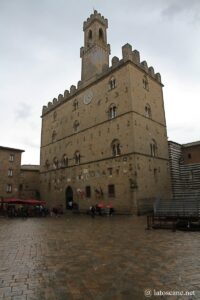
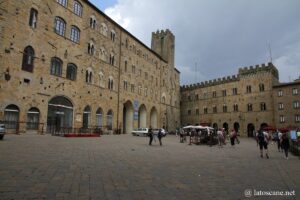
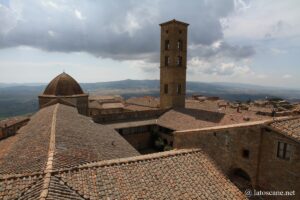
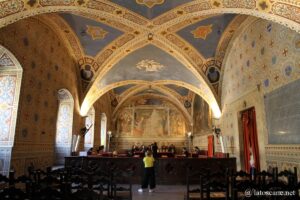
Cathedral of Santa Maria Assunta in Volterra
The Romanesque and Baroque style of the Volterra Cathedral was built over six centuries, from the 12th to the 18th century. The portal includes Roman marbles.
The interior is divided into three naves by pink stucco columns with white capitals. It was largely restored in the 19th century.
It preserves a beautiful coffered ceiling, and the chapels of the 16th century works, as well as a wooden sculptural group from the 13th century Deposition, the 16th century baptismal funds.
Baptistery of San Giovanni Battista in Volterra
Facing the cathedral, the Baptistery of San Giovanni is an octagonal building from the second half of the 13th century. Its façade is superb with its white and green marble bands and the majestic Romanesque portal. Inside an 18th-century altar, decorations, the ancient baptismal font (by Andrea Sansovino, 1502).
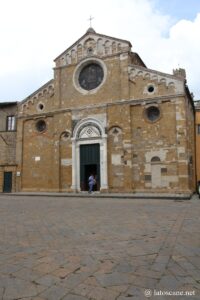
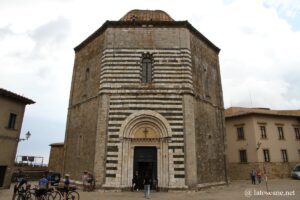
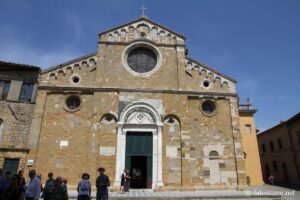
Acropolis and archaeological area of Volterra
The archaeological park Enrico Fiumi is the most important green space in Volterra, with an archaeological area, modest by its remains given its historical importance.
This was indeed the acropolis of the Etruscan city, where the Medici fortress was later erected. The site was inhabited since the bronze age. Little is still visible, except the foundations of the Etruscan buildings that were made of stone, and the Roman cistern.
Medici Fortress of Volterra
The Medici Fortress marks the domination of Florence on Volterra. This imposing building has two separate bodies connected by high walls: the 14th century Rocca Vecchia (or Cassero), and the Rocca Nuova (or Mastio) built by Lorenzo de’ Medici the Magnificent between 1472 and 1474.
It is now a state prison, we can see only a small part of it with the Tower of the Keep.
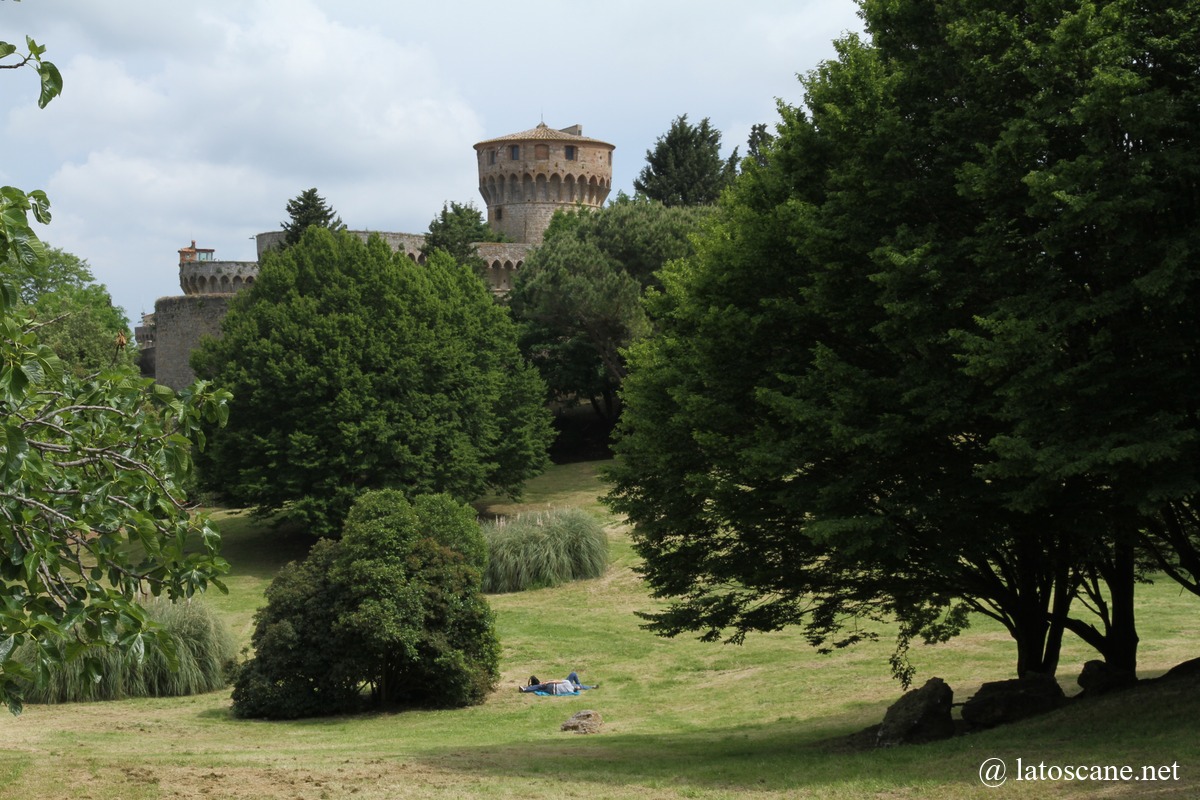
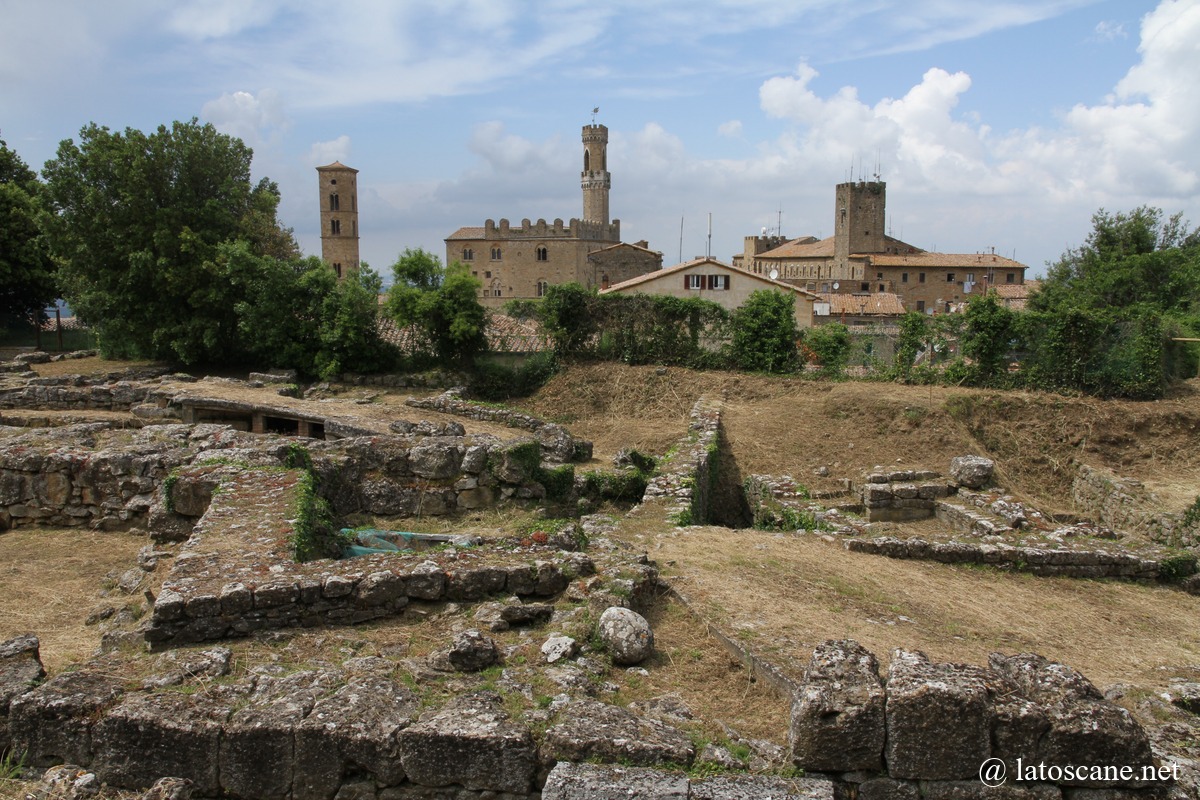
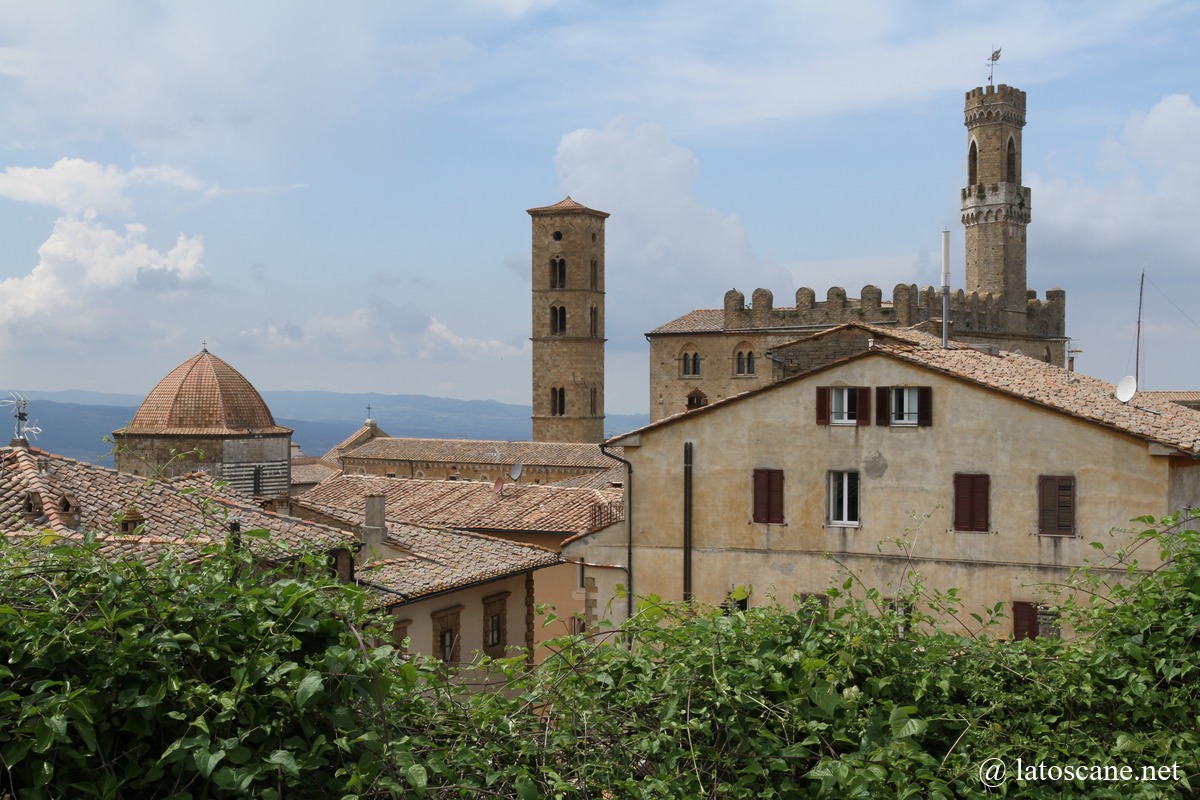
Roman Theatre of Volterra
Rediscovered in the 1950s, the Roman theatre dates from the end of the 1st century BC and was built on the natural slope of the hill. It had a capacity of 1700 spectators.
Only portions remain, including stairs a part of the majestic stage, a covered access gallery. On the two lower rows with its marble seats were engraved the names of the powerful Roman families of Volterra.
Abandoned at the end of the third century, thermal baths were built near the stage.
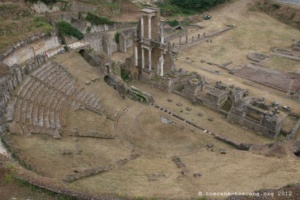
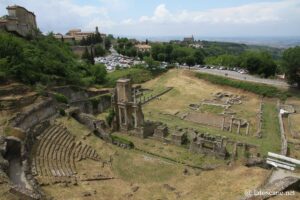
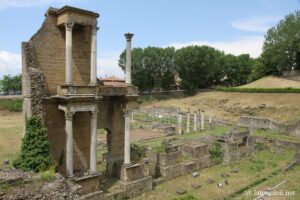
Etruscan Museum Guarnacci
The Palazzo Ruggeri has been home to the Museo Etrusco Guarnacci since the end of the 18th century, one of the main treasures of Volterra. Its 38 rooms house a vast collection on three floors, spanning the Hellenistic and archaic periods.
The largest collection of Etruscan urns in the world. In addition to the lying dead, some urns depict scenes from Greek myths. The second floor houses beautiful works such as the stele of Avile Tite (warrior with spear and sword), the intriguing bronze statuette Ombra della Sera (Evening Shadow in English) from 3rd BC, or the superb tombal lid of the spouses. In these beautiful rooms the golden age of the Etruscan Volterra from the end of the 4th century to the 1st century BC is also narrated.
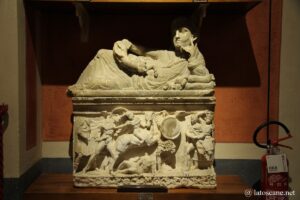
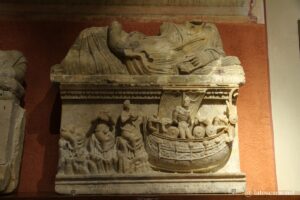
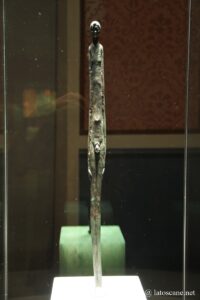
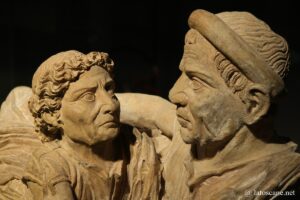
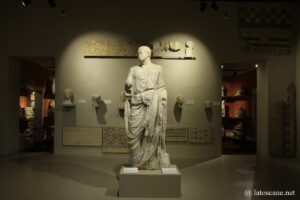
Pinacoteca, Civic Museum and Museum of alabaster
The collection of works of art from Volterra is gathered at Palazzo Minucci Solaini, one of the most beautiful in the city, attributed to Antonio da Sangallo the Elder, the only one that has kept its Renaissance aspect intact.
The pinacoteca (Art Gallery) houses remarkable works, including a polyptych by Taddeo di Bartolo, a large retable of the Christ in Glory by Ghirlandaio, two works by Luca Signorelli, the Deposition from the Cross by the Rosso Fiorentino, etc.
In the tower of Palazzo Minucci is the Ecomuseum of Alabaster. This beautiful white and transparent stone is a very fragile material to work with which the mastery in Volterra goes back to the Etruscans. There are also two Etruscan alabaster urns, two rare medieval capitals, 18th and 19th century sculptures, etc.
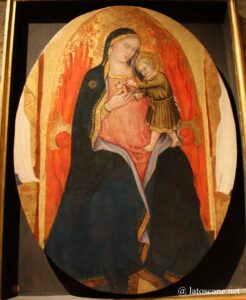
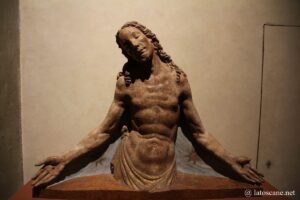
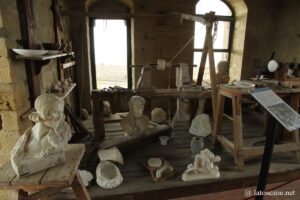
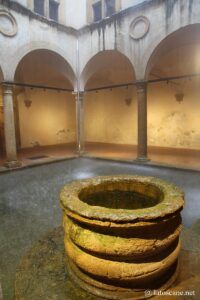
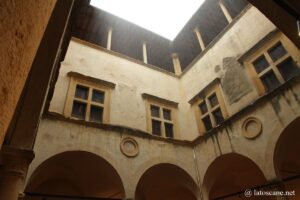
Viti Palace and the Diocesan Museum of Volterra
The Viti Palace is a good example of a palace belonging to the wealthy family from the 16th-17th centuries, built at the end of the 16th century, whose façade marks the transition from Renaissance to Baroque. The interior is intact with in 12 rooms the furniture and decorations of epoch, including alabaster, precious books, oriental objects.
In the early 19th century, the Persio Flacco Theatre was built in the courtyard, still active.
Together with the church of Sant’Agostino, the Diocesan Museum of Sacred Art has about 900 religious works.
Abbey of Saints Just and Clement
About 2 km from Volterra, the abbey of Saints Just and Clement was abandoned after the 1846 earthquake. The Renaissance façade is still visible, with the apse and bell tower standing.
Volterra Balze and Etruscan walls
The balze are cliffs, curious rock and clay rock formations, some of them several hundred meters high.
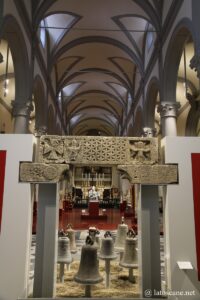
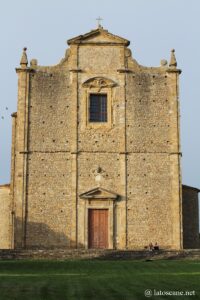
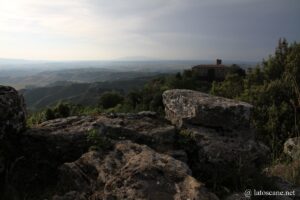
Porta dell’ Arco, walls and gates
We discover several beautiful doors far from the ancient walls of Volterra, including the Porta dell’Arco in particular which is a gate with Etruscan origin, the Porta a Selci adjoining the fortress, the Porta Fiorentina, the Porta San Francesco etc.
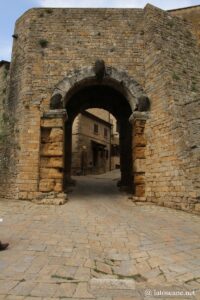
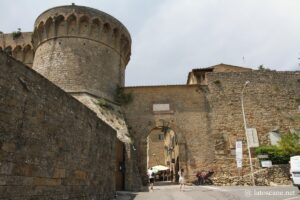
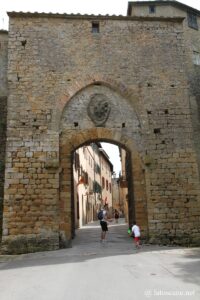
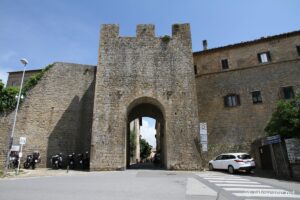
Churches of Volterra
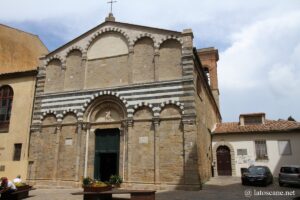
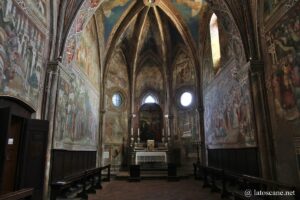
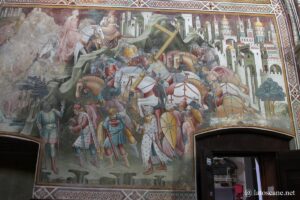
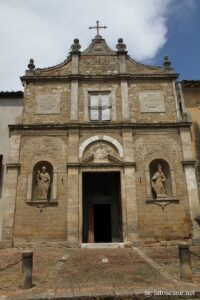
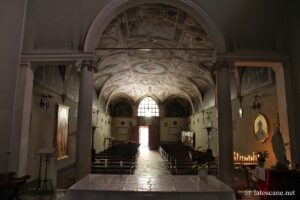
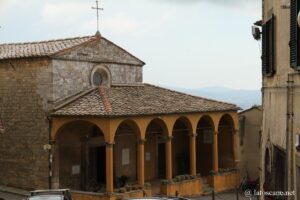
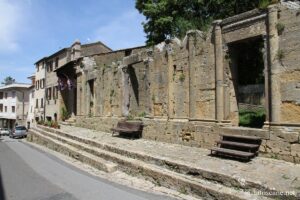
Volterra Street Gallery
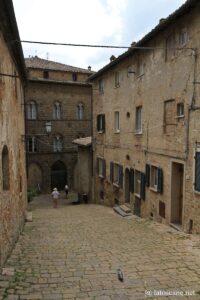
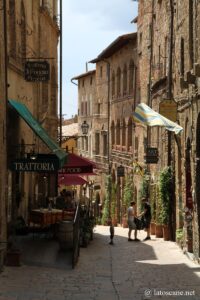
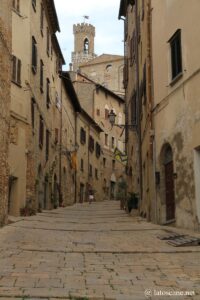
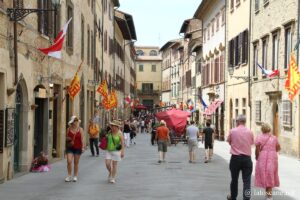
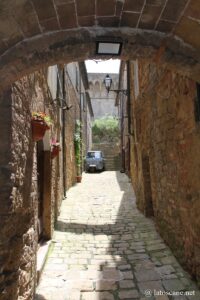
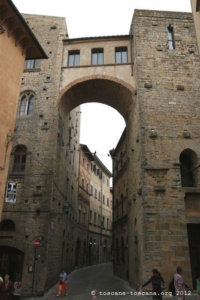
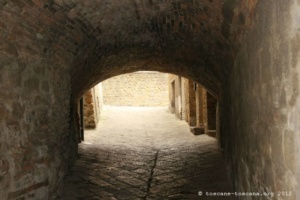
Volterra and necropolis area
Heading north from Volterra, we cross the remains of the Roman city, reaching after 700 meters the Porta Fiorentina, the Porta Diana, an Etruscan gate, then almost 700 meters further the Etruscan necropolises of Portone and Mamini.
Tourist map of Volterra
If you see this after your page is loaded completely, leafletJS files are missing.
Information and sources
- Tourist portals: valdelsavaldicecina.it, volterratur.it, www.discovertuscany.com
- Informations: en.wikipedia.org
Articles about Volterra
- Volterra in Tuscany
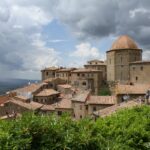 The town of Volterra has a unique charm, becoming one of the favorite destinations in Tuscany, not only for its heritage. Its historic centre dates back to the Etruscan era ...
The town of Volterra has a unique charm, becoming one of the favorite destinations in Tuscany, not only for its heritage. Its historic centre dates back to the Etruscan era ... - Hotels in Volterra
 Book your accommodation in Volterra right away among hundreds of choices between hotels and rooms or apartments
Book your accommodation in Volterra right away among hundreds of choices between hotels and rooms or apartments - Visits and tours in Volterra
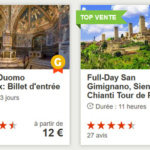 Selection of guided tours and discovery in Volterra and the surrounding area of Tuscany
Selection of guided tours and discovery in Volterra and the surrounding area of Tuscany - Weather in Volterra
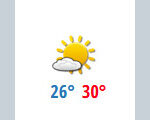 The weather in Volterra and the forecast for the next days and weeks, today and 5 days, rainfall, temperatures, etc
The weather in Volterra and the forecast for the next days and weeks, today and 5 days, rainfall, temperatures, etc
No Comments Yet